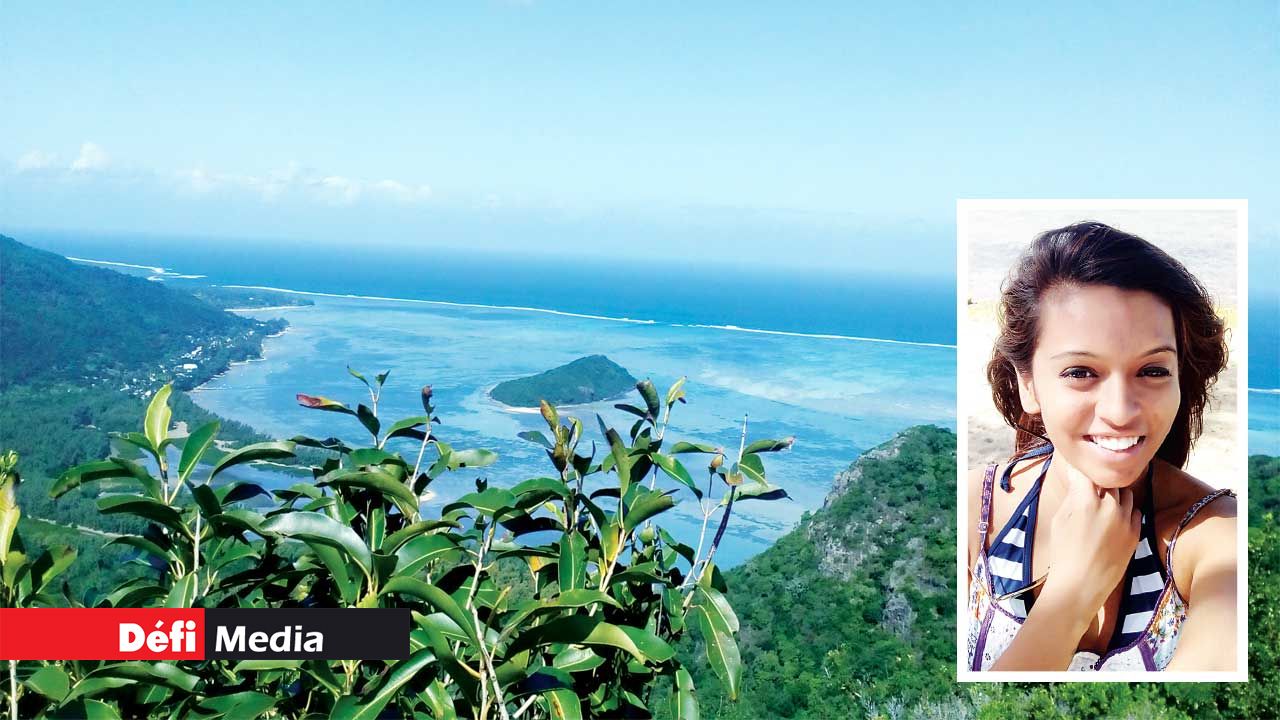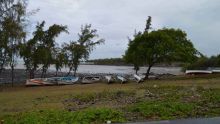
As I reminisce about all the good times I have had so far on this glorious “island of rainbows”, I can’t help but revisit the sublime scenes from my trip to Le Morne and Chamarel. A vacation in Mauritius remains incomplete without visiting these sites of cultural and ecological impetus. Our first stop was the mountain in Le Morne, better known as, Le Morne Brabant. Le Morne is a peninsula that forms the south western tip of Mauritius. Cruising along the coast here is bound to awaken the “shutterbug” in you.
Although it is tempting to dive into the enticing water with its myriad hues of blue, it is advised not to since the lagoon here is rocky and not suitable for swimming. Here’s a little history of why the mountain, now labelled a National Heritage and known as Le Morne Cultural Landscape, is among the top places to visit in Mauritius. Before travellers and tourists frequented this “slice of heaven”, as I like to call it, this site was a safe haven for escaped slaves from the atrocities of colonialism and was recently included in the World Heritage List as a symbol of “the resistance to slavery, marronage and the quest for freedom”.
The slaves converted the caves in the mountain into permanent dwellings and their descendants continued to reside in the former village of Trou Chenille well after slavery was abolished in 1835. A mountain trail passes through this relic of a time long gone. Adventure enthusiasts and nature lovers are in for a treat as you must hike up the 3.5 km long trail to the mountain top. The trail is quite steep and tedious to walk up, especially if it rains. I suggest all my fellow travellers to be fitted out in the right gear for the trek, since you do not want to be panting your way up uncomfortably in flip flops. Your efforts are finally paid off on reaching the end of the trail as you take in the gorgeous panoramic view of the rest of the island below with Nature proudly exhibiting her exquisite colour palette of a variety of greens and blues.

After lunch, we were on our way to the quaint village of Chamarel in the Rivière Noire District which actually lies on the way to Le Morne. Best known for its cascading waterfall and the Seven Coloured Earth, it has become a popular tourist attraction in spite of its rather obscure location tucked away in the hills amid never ending sugarcane fields. At first, it may not seem all that impressive and you might even reconsider paying the entry fee, which is why it is a good idea to read up a bit about the place beforehand. Those hoping to enjoy the Chamarel waterfall from up close are cautioned not to get their hopes, up as it is off limits. Visitors are only allowed to view it and click pictures from afar. Here’s sharing some trivia about the falls as well. It is formed by the convergence of the rivers Viande Salée and St. Denis. During the dry season (May-October), the volume of water running through has been recorded as being an average 22,500m3 which in the wet season (November-April), amounts to a whooping 41,000m3 equalling the daily average water consumption by 1/5th of the Mauritian population.

The Terres de 7 Couleurs (7 Coloured Earth) is a rare and geo-climatic phenomenon resulting in a patch of barren but colourful Earth dunes, nearly 15 metres thick, being formed. The leaching of basalt from this volcanic soil by the hot and humid climate has left on site deposits of iron and aluminium oxides and made it infertile, implying that no vegetation shall ever grow here. The red and brown shades of the dunes are attributed to the presence of iron oxide while the aluminium oxide imparts the blue to violet-blue range of shades to the soil. Both these oxides repel each other leading to the formation of random colourful stripes that shine through in the sunlight.
A few tips for those interested in visiting these locales would be to plan your trip strategically and time it well. The magic of the Seven Coloured Earth can be best enjoyed during midday with the sun shining bright. One can plan to visit Le Morne Brabant, which remains open from 7am to 4pm, either early in the morning or later in the day after visiting Chamarel, which is ideal. Also carry a well marked route map or use a good navigation app if you are traveling in your own vehicle to avoid going round in circles. Remember this and you are all set to have one of the most memorable and fantastic adventures of your life.
Tanushree Basuroy

Notre service WhatsApp. Vous êtes témoins d`un événement d`actualité ou d`une scène insolite? Envoyez-nous vos photos ou vidéos sur le 5 259 82 00 !


















![[Blog] Peace and peaceful living on Planet Earth](https://files.defimedia.info/sites/default/files/styles/square_thumbnail/public/peace_1.jpg?itok=nRv5Xci-)
![[Blog] Guardianship or Governance? II](https://files.defimedia.info/sites/default/files/styles/square_thumbnail/public/happiness.jpg?itok=dl5TBYQC)

